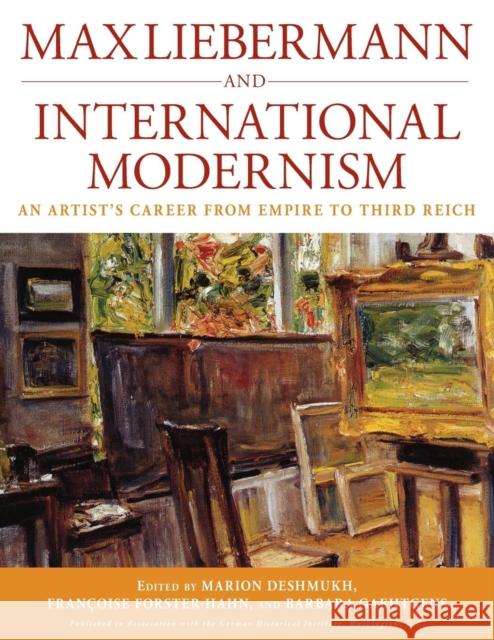Max Liebermann and International Modernism: An Artist's Career from Empire to Third Reich » książka
Max Liebermann and International Modernism: An Artist's Career from Empire to Third Reich
ISBN-13: 9781845456627 / Angielski / Miękka / 2011 / 266 str.
Max Liebermann and International Modernism: An Artist's Career from Empire to Third Reich
ISBN-13: 9781845456627 / Angielski / Miękka / 2011 / 266 str.
(netto: 257,79 VAT: 5%)
Najniższa cena z 30 dni: 270,12
ok. 30 dni roboczych
Bez gwarancji dostawy przed świętami
Darmowa dostawa!
Although Max Liebermann (1847-1935) began his career as a realist painter depicting scenes of rural labor, Dutch village life, and the countryside, by the turn of the century, his paintings had evolved into colorful images of bourgeois life and leisure that critics associated with French impressionism. During a time of increasing German nationalism, his paintings and cultural politics sparked numerous aesthetic and political controversies. His eminent career and his reputation intersected with the dramatic and violent events of modern German history from the Empire to the Third Reich. The Nazis' persecution of modern and Jewish artists led to the obliteration of Liebermann from the narratives of modern art, but this volume contributes to the recent wave of scholarly literature that works to recover his role and his oeuvre from an international perspective. Marion Deshmukh is the Robert T. Hawkes Professor of History at George Mason University where she served as Department Chair from 1984 to 1995 and from 2006 to 2007. Her publications include works and exhibition catalog essays on Max Liebermann, on German academies and art unions, on Berlin's National Gallery of Art since 1945 and on East German painters since 1990. She curated a Max Liebermann graphics show at the Goethe-Institut, Washington, D.C., (Max Liebermann, Works on Paper, 2006) and an exhibit, co-curated with the Wende Museum, also at the Goethe Institut, (Iconoclash Political Imagery from the Berlin Wall to German Unification, 2009-10). Francoise Forster-Hahn is Distinguished Professor of the History of Art at the University of California, Riverside. She is the editor of Imagining Modern German Culture, 1889-1910 (1996) and the author of Max Beckmann in Kalifornien: Exil, Erinnerung und Erneuerung (2007). Her publications include numerous essays and contributions to books and exhibition catalogues on issues of nineteenth and twentieth century art and the role of institutions and exhibition displays in the formation of national and cultural identity. She is currently preparing a publication on the role of Berlin's Jahrhundertausstellung (1906) and Julius Meier-Graefe's Entwicklungsgeschichte der modernen Kunst (1904) in the construction of the history of modern art. Barbara Gaehtgens specializes in 17th Century Dutch and French art, 18th Century art theory and 19th Century German and American art. She has taught at the Technische Universitat Berlin and Princeton University and has been affiliated as a scholar with CASVA, Washington, National Gallery of Art, and the Centre Allemand d'histoire de l'art in Paris. Her publications include Adriaen van der Werff, 1659-1722 (1987), Max Liebermann. Holland als Vorbild in exh. cat. Max Liebermann-Jahrhundertwende, Nationalgalerie Berlin (1997), Genremalerei. Theorie der klassischen Bildgattungen (2003), and Richelieu patron des arts (2009). Her present research centers on 17th Century French political iconography.











